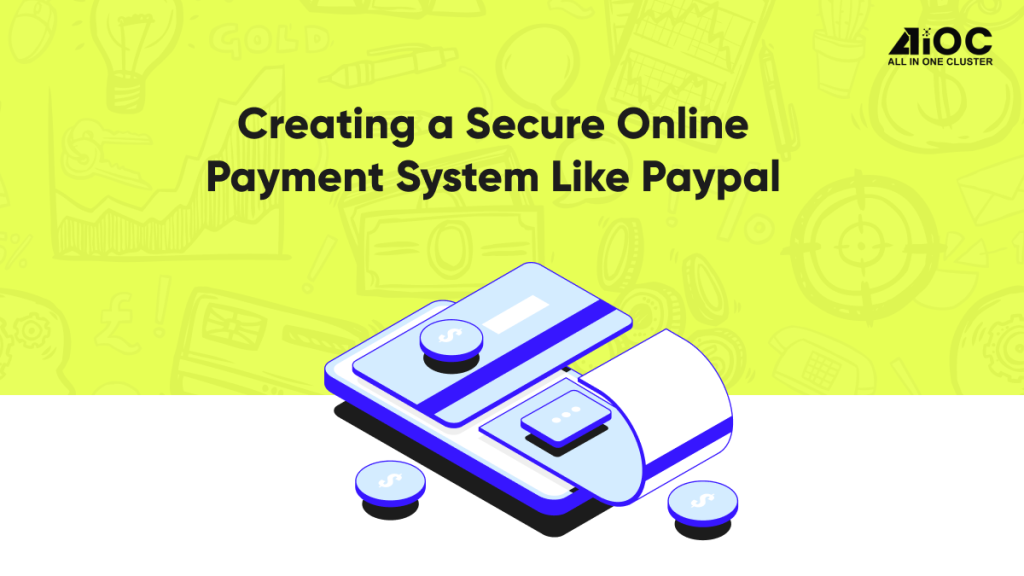In today’s digital age, online transactions have become an integral part of our daily lives. From purchasing goods to paying bills, people rely on secure payment gateways to ensure their financial information remains safe. PayPal, a pioneer in online payment solutions, has set the benchmark for security and convenience. If you’re considering developing a payment gateway similar to PayPal, commonly referred to as a “PayPal clone,” you’re in the right place. In this guide, we’ll walk you through the essential steps to create a secure payment gateway that users can trust.
Understanding the Basics
Before diving into the development process, it’s crucial to understand the fundamental components of a payment gateway. At its core, a payment gateway acts as a bridge between merchants and financial institutions, facilitating secure online transactions. To create a PayPal clone, you’ll need to incorporate key features such as:
- User Registration and Account Management: Allow users to register accounts and manage their profiles securely. Implement robust authentication mechanisms to safeguard sensitive information.
- Payment Processing: Enable users to make payments using various methods, including credit/debit cards, bank transfers, and digital wallets.
- Transaction Security: Implement encryption protocols and fraud detection mechanisms to ensure the security of every transaction.
- Merchant Integration: Provide merchants with tools to integrate the payment gateway seamlessly into their websites or applications.
- Dispute Resolution: Establish a system for resolving disputes between buyers and sellers, promoting trust and transparency.
Building Blocks of Security
Security is paramount when developing a payment gateway, as any vulnerabilities can compromise user data and erode trust. Here are some essential security measures to consider:
- Data Encryption: Utilize strong encryption algorithms to protect sensitive data transmitted between users, merchants, and financial institutions.
- PCI Compliance: Adhere to Payment Card Industry Data Security Standard (PCI DSS) guidelines to ensure the secure handling of cardholder information.
- Two-Factor Authentication: Implement two-factor authentication (2FA) to add an extra layer of security to user accounts and prevent unauthorized access.
- Regular Audits and Penetration Testing: Conduct regular security audits and penetration tests to identify and address potential vulnerabilities proactively.
- Secure Development Practices: Follow secure coding practices and perform code reviews to mitigate security risks during the development process.
User Experience Matters
In addition to security, a seamless user experience is essential for the success of your PayPal clone. Here are some tips to enhance user experience:
- Intuitive Interface: Design a user-friendly interface that makes it easy for users to navigate and complete transactions.
- Fast and Responsive: Optimize performance to ensure quick loading times and responsiveness across devices.
- Clear Instructions: Provide clear instructions at each step of the payment process to guide users effectively.
- Mobile Compatibility: Ensure that your payment gateway is compatible with mobile devices, allowing users to make payments on the go.
- Error Handling: Implement robust error handling mechanisms to assist users in resolving any issues they encounter during the payment process.
Testing and Quality Assurance
Before launching your PayPal clone, thorough testing and quality assurance are essential to identify and rectify any bugs or issues. Here are some testing strategies to consider:
- Functional Testing: Test each feature of your payment gateway to ensure it functions as intended.
- Security Testing: Conduct rigorous security testing to identify and address any vulnerabilities in your system.
- Compatibility Testing: Test your payment gateway across different browsers, devices, and operating systems to ensure compatibility.
- Performance Testing: Measure the performance of your payment gateway under various conditions, including heavy loads and peak traffic times.
- User Acceptance Testing: Solicit feedback from beta testers and real users to identify any usability issues and make necessary improvements.
Launching and Scaling
Once you’ve completed development and testing, it’s time to launch your PayPal clone and start acquiring users. Here are some tips for a successful launch:
- Marketing and Promotion: Develop a comprehensive marketing strategy to promote your payment gateway and attract users and merchants.
- Customer Support: Provide excellent customer support to address any issues or concerns raised by users or merchants promptly.
- Continuous Improvement: Continuously gather feedback from users and merchants to identify areas for improvement and implement new features or enhancements.
- Scalability: Design your payment gateway with scalability in mind to accommodate growth and handle increased transaction volumes as your user base expands.
- Regulatory Compliance: Ensure compliance with relevant regulations and laws governing online payments in your target markets to avoid legal issues.
In Conclusion
Building a secure payment gateway like PayPal, or a PayPal clone, requires careful planning, attention to detail, and a commitment to security and user experience. By following the steps outlined in this guide and incorporating best practices, you can create a payment gateway that users trust and rely on for their online transactions. Remember to prioritize security, usability, and scalability throughout the development process, and continuously strive for improvement to stay ahead in the competitive landscape of online payments.
